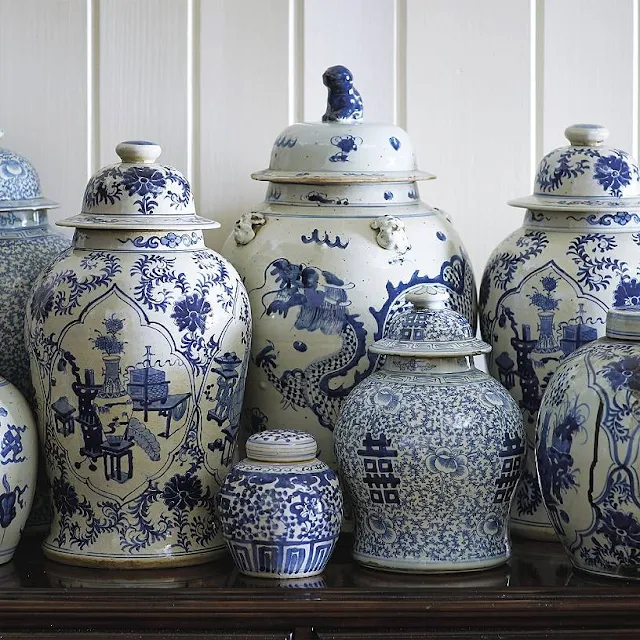Blue and White Porcelain: Transforming Western Decor and Enduring Popularity in the Hampton Style
Throughout history, art and design have transcended geographical boundaries, influencing and being influenced by different cultures. One such example is the captivating allure of blue and white porcelain, which originated in China but has left an indelible mark on Western decor. Its timeless elegance and versatility have made it a coveted style, particularly in the Hampton style that exudes coastal sophistication and classic charm.
Blue and white porcelain, known as qinghua in Chinese, has a rich heritage dating back over a thousand years. Its origins can be traced to the Tang Dynasty (618-907), but it truly flourished during the Ming Dynasty (1368-1644) and the Qing Dynasty (1644-1912). This exquisite form of porcelain featured intricate patterns and designs painted in cobalt blue pigment on a white background, often depicting scenes from nature, mythology, or everyday life.
The popularity of blue and white porcelain in the West can be attributed to several factors. One significant catalyst was the Age of Exploration during the 15th and 16th centuries when European traders and explorers ventured to distant lands, including China. Chinese porcelain's exquisite beauty and craftsmanship captivated Western audiences, and the demand for these luxury goods soared.
As trade routes expanded and international commerce flourished, blue and white porcelain arrived in Europe. It quickly became a symbol of wealth, refinement, and exoticism among the aristocracy and the elite. Collectors cherished these delicate pieces, displaying them as status symbols and fine art in their opulent homes.
The influence of blue and white porcelain on Western decor was profound. Its introduction sparked a fascination with Eastern aesthetics and inspired a new artistic movement called chinoiserie. European craftsmen attempted to recreate Chinese porcelain's distinctive patterns and motifs, incorporating them into furniture, wallpaper, textiles, and ceramics. This fusion of Eastern and Western styles created a unique and visually striking aesthetic that permeated European interiors.
Blue and white porcelain impacted various design movements, including Rococo, Neoclassicism, and the Arts and Crafts movement. Its versatility allowed it to seamlessly blend with different design sensibilities, from the ornate and elaborate to the simple and minimalist. The enduring appeal of blue and white porcelain lies in its ability to harmonize with diverse decor styles, adding an element of sophistication and visual interest to any space.
Fast forward to the present day, and blue and white porcelain continues to captivate design enthusiasts worldwide. Its timeless elegance has found a natural home in the Hampton style, a popular interior design trend inspired by the coastal regions of the Hamptons in New York. The Hampton style embraces a relaxed yet refined aesthetic characterized by a fresh and breezy color palette, natural materials, and a seamless indoor and outdoor living blend.
Blue and white porcelain effortlessly complements the Hampton style, infusing spaces with coastal charm and classic beauty. Whether it adorns vases, plates, ginger jars, or decorative accents, blue and white porcelain is a focal point, bringing depth and character to neutral color schemes. Its serene blue hues evoke the sea and sky, while the intricate patterns add visual texture and interest.
In Hampton-style interiors, blue and white porcelain can be showcased on mantels, shelves, or dining tables, creating an inviting and elegant ambiance. It pairs well with natural materials like rattan, linen, and jute, emphasizing the coastal and organic feel of the space. Whether in a beachfront retreat or an urban dwelling, blue and white porcelain bridge the gap between classic and contemporary, infusing interiors with timeless style.
Therefore, the allure of blue and white porcelain has transcended time and cultural boundaries, leaving an indelible mark on Western decor. From its origins in China to its influence on European design movements, this exquisite art form continues to captivate and inspire. Its enduring popularity, particularly in the Hampton style, is a testament to its timeless elegance and ability to transform any space into a haven of classic beauty.





Comments
Post a Comment